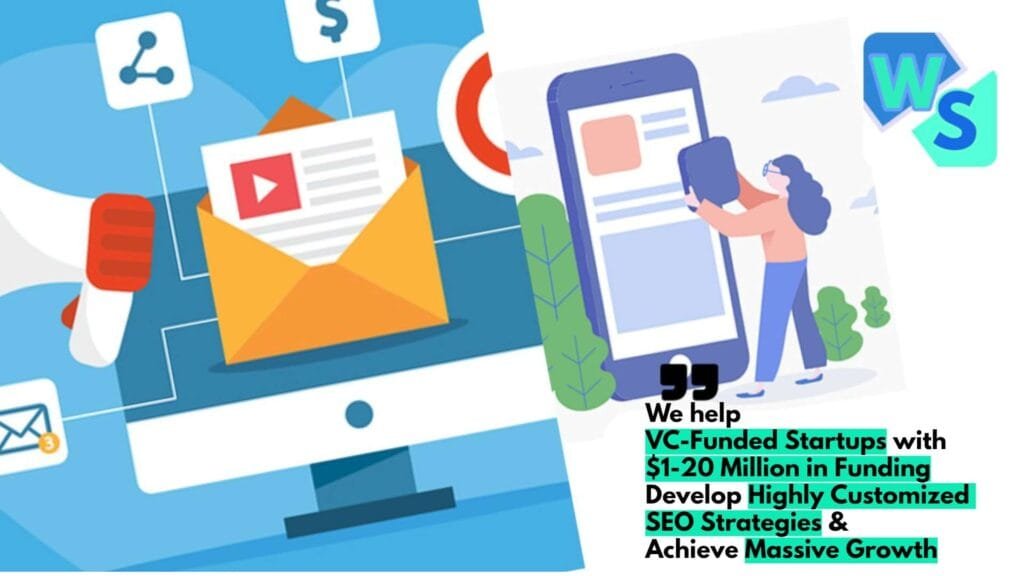Influencer Marketing Strategies
Influencer marketing is turning into a bit of a powerhouse for mobile game promotions. It’s giving game makers and promoters a pretty sweet deal.
Impact of Influencer Marketing
Consider this: for every dollar forked out on influencer campaigns, game publishers are seeing an average return of $6.50. Some are raking in up to 20 bucks per dollar spent (Udonis). That’s not just loose change; it shows that when influencer strategies are on point, they can bring in serious dough. Plus, they help web in a loyal crowd who loves gaming just as much as they love following their favorite influencers.
When influencers connect with their followers, it creates rich communities centered on this passion. These followers don’t just play games; they’re all in, spending hours—and sometimes cash—engaging with the content (Udonis). So, if you’re looking for players who are deeply involved, these folks are your perfect catch.
Choosing the Right Influencers
Getting the right influencers in your corner can make or break your campaign. Good luck charm: 61% of marketers say finding the right match is tough. When picking them, things like audience details, how they’re engaging, and stats from their social media accounts matter. Always ask for proof, like actual screenshots showing their reach. This way, you know you’ve got someone whose audience fits your game.
How you brief your influencer is key, too. Spell out what you want the campaign to achieve, all key deets about the game, what kind of content you’re after, what your brand stands for, and when it all needs to be done. Also, give them plenty of room to express themselves so their posts hit home with their followers.
| What to Consider | Things to Remember |
|---|---|
| Who’s Watching | Check that followers match the group you’re going after. |
| Interaction Levels | High activity means they’re really interested and involved. |
| Say It Like You Mean It | Urge influencers to be real and believable in their work. |
| Spell It Out | Set up a clear game plan including aims, dos and don’ts, and styles. |
By pondering these things, you’ll be set to craft influencer campaigns that boost the mobile gaming outfit’s unique perks. For extra nuggets of wisdom, feel free to peruse our piece on influencer marketing in gaming and get a load of our video game marketing tactics.
Mobile Game Revenue Insights
Who would have thought our pocket-sized distractions would rake in such a fortune? Mobile games are no longer just a way to kill time; they’re key players in the gaming world, bringing in a hefty chunk of change and keeping game creators on their toes. Catching onto these money-making trends and how the cash flows is a big deal for the folks building the games and for those spreading the word about them.
Global Revenue Trends
In 2023, mobile games earned some serious dough—a whopping $86 billion! That’s almost half of all the money made in gaming, which hit $184 billion (Udonis). And if you’re betting on Android, you’re onto something, as it hauled in $47.3 billion of that total.
| Year | Global Mobile Game Revenue (in billions) | Total Gaming Revenue (in billions) | Mobile Market Share (%) |
|---|---|---|---|
| 2023 | 86 | 184 | 49 |
| 2029 (Projected) | 164.8 | N/A | N/A |
And hold on to your joysticks because this is just getting started. Projections suggest the mobile gaming cash cow will keep growing, planning to hit $164.8 billion by 2029. This boom is thanks to tech that’s getting cooler by the day, gamers from all walks of life, and esports and cloud gaming shooting up.
Revenue Distribution Insights
Fasten your seatbelts because how the green is split in mobile gaming is, well, eye-opening. The top dogs are leading with what’s known as the Pareto Principle: about 80% of the cash comes from just 20% of the gamers out there. Yep, it’s all about keeping the big spenders happy and crafting strategies that make them open their wallets.
Whip out your wallets—oops, I mean freemium—because these games are holding court with around 90% of the revenue. They lure you in with free access then dangle shiny in-app goodies and extras.
| Revenue Source | Percentage of Total Revenue |
|---|---|
| Freemium Games | 90 |
| Pay-to-Play Games | 10 |
This paints a clear picture for marketers—get creative with gaming marketing strategies and harness the power of influencer marketing in gaming or online gaming advertising methods to keep players glued and coming back for more. Knowing these ins and outs means you’re set to scoop up more players and make them stick by your side.
Mobile Game Market Statistics
Get a grip on the numbers flooding the mobile gaming scene. For game creators, platform operators, and ad wizards, knowing these stats is like finding a gold coin in the maze. We’re decoding the scale, growth, and ad spending that’s shaping mobile games.
Market Size and Growth
Mobile gaming is galloping at full tilt! In 2023, it clocked in at a whopping $86 billion globally, with Android devices snatching up about 55% or $47.3 billion of that tasty pie. The market’s expected to grow like a weed, with a compound annual growth rate (CAGR) blowing past 12.6% from 2023 to 2028. Come 2027, we’ll be gazing at a $118 billion market (Udonis).
| Year | Global Mobile Game Revenue (in billions) | Android Revenue Share (in billions) |
|---|---|---|
| 2023 | 86 | 47.3 |
| 2024 (Projection) | N/A | N/A |
| 2027 (Projection) | 118 | N/A |
2023 saw 88 billion downloads—down a smidge by 2% from earlier years. Mostly, hyper-casual games are the culprits behind this number.
Mobile Advertisement Spend
Pocket change doesn’t cut it in ad land. In 2023, ad spending skyrocketed to $362 billion, up $26 billion from the prior year. There’s no slowing down, with forecasts pointing to a jump of $40 billion—totaling $402 billion in 2024. That’s a five-year CAGR of 16.2%.
| Year | Mobile Advertisement Spend (in billions) |
|---|---|
| 2022 | 336 |
| 2023 | 362 |
| 2024 (Projection) | 402 |
Numbers like these show a lively shift in mobile game marketing playbooks. Anyone in the biz needs to keep these figures in sight when scheming gaming marketing strategies to grab and hold audience attention.
Mobile App Influencer Marketing
In the fast-paced world of mobile game marketing, hooking up with influencers is a mighty tool. By riding on the influence and trust these personalities have, game devs can boost how often people see, download, and get into their games.
Using Influencers Like a Pro
To pull off a killer influencer partnership, game creators need a solid plan. It kicks off by picking influencers who really click with the audience you’re aiming for. Gaming influencers usually draw in fans who not only love playing games but are also super engaged and ready to splash some cash on new games.
A smart influencer marketing campaign might look like this:
- Launch Party: Stirring up excitement before a new game drops.
- Reviews and How-Tos: Showing off the game through personal insights and gameplay guides.
- Fan-Driven Content: Getting followers to share their own spin on the game.
These campaigns shine when the brief given to influencers is crystal clear, listing out the goals, game details, the types of posts expected, brand rules, and deadlines. Letting influencers keep their unique vibe helps build a more authentic bond with future players.
Crunching the Numbers
Checking out how your influencer campaigns are doing is key to seeing if they’re worth your dollars and shaping what you do next. On average, every buck spent on influencer marketing for mobile games is pulling in around $6.50, with a lucky few reeling in as much as $20 for each dollar thrown in.
Keep your eye on these biggies:
- Engagement Buzz: Keeping tabs on likes, comments, shares, and the chatter around posts.
- Download Numbers: Watching how many installs come from each influencer’s push.
- Follower Bump: Checking for spikes in the game’s social media followers while campaigns are on and after they wrap up.
Plus, working with influencers can be easy on the wallet. A big chunk of them charge $250 or less per post, and loads of small-time influencers are even repping brands free of charge. This makes them a solid ally for indie devs and small teams who don’t have big marketing budgets to burn.
Using solid analytics to measure how influencer partnerships are working doesn’t just show you if what you’re doing now is good; it helps sketch out what you’ll do next. For more ideas on getting your game out there, dive into influencer marketing in gaming and gaming marketing strategies.
AR and VR in Mobile Apps
These days, AR and VR are popping up everywhere in mobile apps, especially in the gaming world. They’re turning regular ol’ user interactions into something out of a sci-fi movie.
Immersive Experiences
Gone are flat, boring screens replaced by AR and VR’s vibrant adventures. We’re talking about mixing the digital with the real world, creating a space where players feel like they’ve stepped into another universe. No surprise here, research shows these experiences make users happier and stick around longer. Developers, take note—these elements are game-changers.
| Benefit | Description |
|---|---|
| Enhanced Engagement | AR and VR draw users in with experiences that really hold their attention. |
| Realistic Gameplay | Gamers feel like they’re right in the action, ramping up the fun factor. |
| Unique Perspective | Players get a 360-degree view, making their game adventure unbeatable. |
As user-device interactions evolve, adding AR and VR is no longer just nice to have; it’s becoming a must-do for anyone serious about making killer apps (Attract Group).
App Development Advancements
With tech always marching forward, AR and VR are becoming staples in the developer’s toolkit. They’re not just flashy add-ons anymore but tools to create something spectacular. When these technologies meet app development, you’re in for a feature-packed ride, leaving traditional methods in the dust. Hook up with a developer who knows their way around AR and VR, and you’re bound to produce something noteworthy (Attract Group).
Looking down the road, mobile apps will only get cooler, with slick user interfaces and experiences creeping into everything from books to band-aids. This change is set to overhaul how people mess around with digital stuff.
In conclusion, tossing AR and VR into mobile games doesn’t just hyp up player fun; it pushes developers to build more advanced apps designed for today’s tech-savvy world. For more on how to win over gamers, check out our takes on gamified loyalty programs and video game marketing tactics.
Evolving Mobile Gaming Industry
Mobile gaming’s on the rise, folks, and everyone’s scrambling—developers, platform bosses, marketers—to keep up with the hottest trends. If you want to win in this game, pay close attention to your money-making strategies and which game genres are taking the spotlight.
Monetization Strategies
It’s all about mixing and matching in the mobile gaming biz. A little bit of in-app purchases here, some ads there, plus the cherry on top—subscriptions. This cocktail caters to what all kinds of gamers want while making sure the money keeps rolling in.
Here’s a quick glance at how they do it:
| Strategy Type | Description |
|---|---|
| In-App Purchases | Players can buy cool stuff inside the game to level up their fun. |
| Advertising | Show ads in-game and rake in cash from ad partners. |
| Subscriptions | Offer special content or features for folks who fork out a monthly fee. |
| Freemium Model | Game’s free but players can pay for extra awesome content or perks. |
Free-to-play games? They’re the rock stars of mobile gaming—no upfront payment means way more people are playing. It’s changed the game scene completely, opening doors for players and developers alike (Hakia).
Genre Performance Insights
Knowing which game genres are cash cows helps steer marketing strategies and forecast revenue. Role-playing games (RPGs) and strategy games are sitting pretty at the top in terms of revenue. Meanwhile, lighter puzzle games aren’t slacking either—they’re cashing in big time too (Kreonit).
Check out how these genres stack up:
| Genre | Revenue Performance | Download Popularity |
|---|---|---|
| RPG | Money-making champ | Moderate downloads |
| Strategy | Strong earnings | Moderate downloads |
| Casual (Puzzles) | Raking in the dough | Super popular downloads |
| Hyper-Casual | Low income | Most downloaded in 2024 |
Get this—the mobile gaming scene’s pegged to skyrocket to around $164.8 billion by 2029, fueled by tech leaps, a shift in who’s playing games, and a rising tide of eSports and cloud gaming fans (MEF Yearbook 2024). The scene’s buzzing with a move toward hybrid-casual games, where simple play meets thrilling features, pulling in players and cash alike (MEF Yearbook 2024).
Grabbing a handle on these money-making ways and watching genre performance is a must-do for developers and marketers hoping to hit the jackpot in the ever-changing gaming universe. Check out more tips on gaming marketing strategies and video game marketing tactics right here.
Social Media Marketing Tactics
Mobile game marketing and social media? They’re practically best buddies now. Let’s dig into some smart ways to boost your game’s presence on social media and keep those players coming back for more.
Promoting Games on Social Media
Now, social media isn’t just a time-sink anymore. It’s like the main street for reaching out to new players. Folks generally spend around 2 hours and 25 minutes every day glued to their screens on various platforms. Check out these sweet tricks:
Influencer Partnerships: Hook up with influencers to seriously boost your game’s street cred. These guys can shout your game’s name from virtual rooftops and get everyone talking about it.
Behind-the-Scenes Content: Give people a peek behind the curtain. This makes your game feel real, relatable, and trustworthy. Everybody loves a good backstage pass.
Player Stories: Let the players speak! Sharing real stories from the folks playing your game hits home way better than corporate mumbo-jumbo. It’s like word-of-mouth, but digital (Dot Com Infoway).
Contests and Giveaways: Everybody loves free stuff. By throwing contests and giveaways, you can draw in more players and get them to stick around for a chance at a win.
| Promotion Tactic | What You Get |
|---|---|
| Influencer Partnerships | Skyrockets visibility |
| Behind-the-Scenes Content | Grows trust and connection |
| Player Stories | Boosts authenticity |
| Contests and Giveaways | Bumps up engagement |
User Engagement Strategies
Getting folks onboard is just the start. Keeping them hooked is where the real magic happens. Here’s how you can keep the party going with fun interaction tricks on social media:
Gamified Loyalty Programs: Turn loyalty into a game! Reward players for sticking around with points or badges, which keeps them glued to their screens (gamified loyalty programs).
Interactive Content: Go beyond likes—dive into polls, quizzes, and snazzy questions. This back-and-forth is like a quiet nod to building a community vibe, which players absolutely dig.
Consistent Updates and Announcements: Stay in the loop with your audience by sharing exciting updates or spicy deets about the game that’ll keep them coming for more.
Utilizing User-Generated Content: Encourage players to share their epic moments or embarrassing fails with screenshots or videos. Share this user creativity, and boom, you’re fostering a community.
Cross-Promotion with Other Platforms: Don’t put all your eggs in one basket. Push your game on multiple social media platforms to reach more folks.
Bag these smart strategies to get those game downloads shooting to the stars and keeping your players happily engaged. Want to know more about gaming strategies? Check out our gaming marketing strategies for some extra pointers.
Free-to-Play Mobile Games
Freemium Model Overview
Free-to-play mobile games have taken the gaming world by storm, drawing in folks from all walks of life. Who doesn’t love the idea of snagging a game without forking out cash upfront? This setup, known as the freemium model, mixes the thrill of gaming with the chance to buy stuff in the game if you want. It’s like getting a free ticket to an amusement park with the option to buy snacks if you fancy. Both the players and the game makers are reaping the benefits.
This model lets developers rake in the bucks while gamers have a blast. It’s a win-win. Game makers can whip up fun adventures that keep players glued to their screens and interested enough to maybe spend a few bucks on extras, but only if they want to. Here’s a peek at what makes the freemium model tick:
| Feature | Description |
|---|---|
| Accessibility | Free to download, welcoming to everyone |
| Monetization | Cash comes from in-app buys, not downloads |
| User Experience | Dive into full gameplay without having to pay |
| Engagement | Keeps players hooked with fresh updates and new stuff |
In-App Purchase Strategies
Buying stuff in free-to-play games usually looks like getting fake money, cool gear, or game boost magic. These options can add a lot more fun and make things move along faster for those who dash out for them. Some folks spend to save time or to get a leg up on the competition.
To get players to splash out on these extras, game makers use tricks like flash sales, holiday specials, and just plain irresistible deals. Understanding what makes players tick can help developers tune into their audience’s needs and wants. Some sneaky strategies are:
- Scarcity and Urgency: Making offers seem rare or limited to push players to buy soon.
- Reward and Progress: Giving players nice perks for their cash that help them speed up in the game.
- Social Proof: Showing what other gamers are buying to nudge more spending.
- Customization: Letting players tweak their game and make it their own, pulling them deeper into the game.
Check out this rundown of common in-app buys and why players go for ’em:
| In-App Purchase Type | Description | User Benefit |
|---|---|---|
| Virtual Currency | Use to snag more in-game stuff and level up | Makes the game more fun |
| Exclusive Items | Special things that give an edge or look cool | Makes the player stand out and enjoy more |
| Power-Ups | Adds a temporary boost to the game | Helps players beat tough spots |
By knowing these tricks, game designers can create a better playground for everyone, whether they’re paying to play or just having fun for free. Check out more on game marketing tips in our piece here.




















